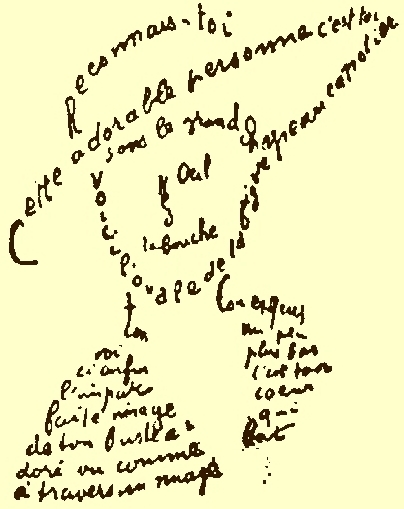Explore Identity with Calligram Poetry: A Multidisciplinary Art Activity
What is a calligram?
A calligram is a word or piece of text in which the design and layout of the letters create a visual image related to the meaning of the words themselves.
This calligram activity is part of a broader lesson on calligram poetry, which is part of an even bigger series on Surrealism. You can find both here:
- Play Like a Surrealist: 13 Surrealist Games and Techniques to Unleash Kids Creativity
- How to Create Calligram Poetry: Surrealism Art Interdisciplinary Lesson Plan
- 10 Easy and Quick Ice Breaker Activities for a Memorable First Day of School
- 8 Surrealist Games You Can Do with Just an Old Magazine
“I am” Identity Calligram Poem| Multi-disciplinary Activity
Objectives:
For this activity, students compose an “I am” Identity calligram.
Materials:
- Paper
- Pencils
- Erasers
- Pen
Exploration:
There are two possible options to go about it:
- The concrete poetry method
- The visual poem style
What is the difference between visual and concrete poetry?
Concrete poetry has developed from a long tradition of patterned poems (like the those in ancient Greece). As such, concrete poetry relies on the length of verses and the structure of the poem to create shapes, while visual poetry is generally freer in its form, and can include drawn and decorative elements.
So for this activity students will either:
- Create a human shape using only text and empty space
- Write the verses along drawing lines.
Below are two examples by Oliverio Girondo and Guillaume Apollinaire.


In the first example, students will need to carefully consider their poem’s structure to create the desired form. Length of the verses, negative space, and typography will all need consideration.
In the second case, they will focus on drawing a portrait using as few lines as possible. One single line would be ideal! They will then substitute the drawing with their text. In this case, structure and length are not as important.
I recommend this resource as literacy support for this lesson.
Read also:








